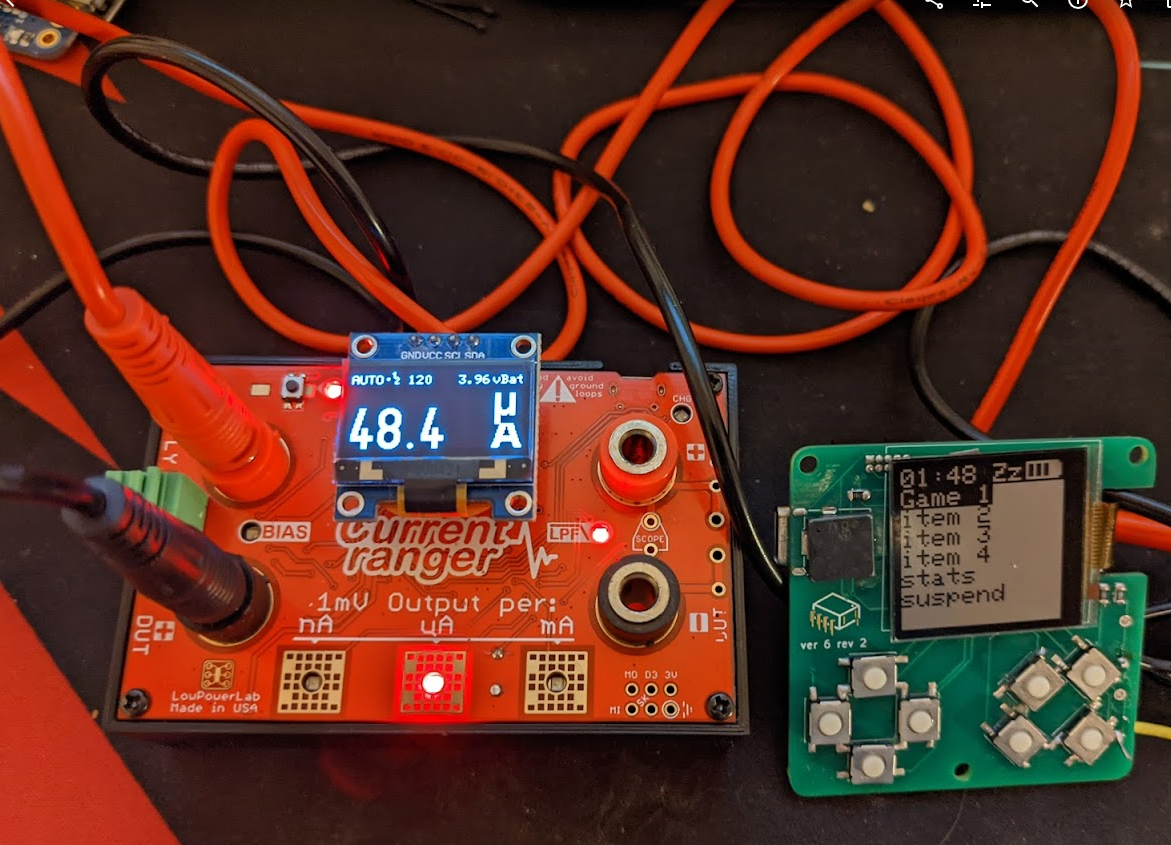A digital pet with dedicated physical hardware would be heckin cool.
What features would make it extra cool?
- long battery life (multi week or even multi-month if possible, even better if rechargeable)
- relatively easy to make software for (via Arduino SDK or circuit/micro python)
- easy image transferring for adding new digital pets for non-technical users
- at least 2-10 fps screen for mini games
- buzzer/beeper/speaker for cool tunes (and lets the pet to yell at you when it needs digital food or attention)
- cheap, ideally less than 30, or 20 USD in parts
Current feature set:
- approx. two week battery life using 2xAAA (I think this can still be improved via software and new power regulator selection)
- currently uses Arduino SDK, the device is based off of the Adafruit feather m0 architecture, so in theory should be capable of running circuit python (no idea how this will affect battery life though, last I checked deep sleep was not supported on circuit python)
- device implements mass storage support for copying custom image files over
- sharp memory lcd with the samd21 allows for approx. 30 fps using DMA transfer
- piezo buzzer for simple tones
- pre-pandemic BOM was about 20 USD each for producing a batch of 100
Current Status:
- Hardware finished! Small batch production started. Working on game and virtual pet logic, as well as lots of pixel art.
Source, Models, Schematics on Github
 NanoCodeBug
NanoCodeBug










 Waiting on the next revision to use a CurrentRanger to measure normal and sleep current. Rough estimations observing the 800 mah NiMH cells drain in about 48 hours suggests that current draw is approx 16 mah at the moment. Either the cells were not fully charged to 800 mah or a samd21 configuration issue or other source causing about 60% more power draw than expected.
Waiting on the next revision to use a CurrentRanger to measure normal and sleep current. Rough estimations observing the 800 mah NiMH cells drain in about 48 hours suggests that current draw is approx 16 mah at the moment. Either the cells were not fully charged to 800 mah or a samd21 configuration issue or other source causing about 60% more power draw than expected. 





 Linus Dillon
Linus Dillon
 Jelle Reith
Jelle Reith
 Dan Julio
Dan Julio
 Dominic Buchstaller
Dominic Buchstaller
Are you selling these or willing to make a custom one for someone with pay?